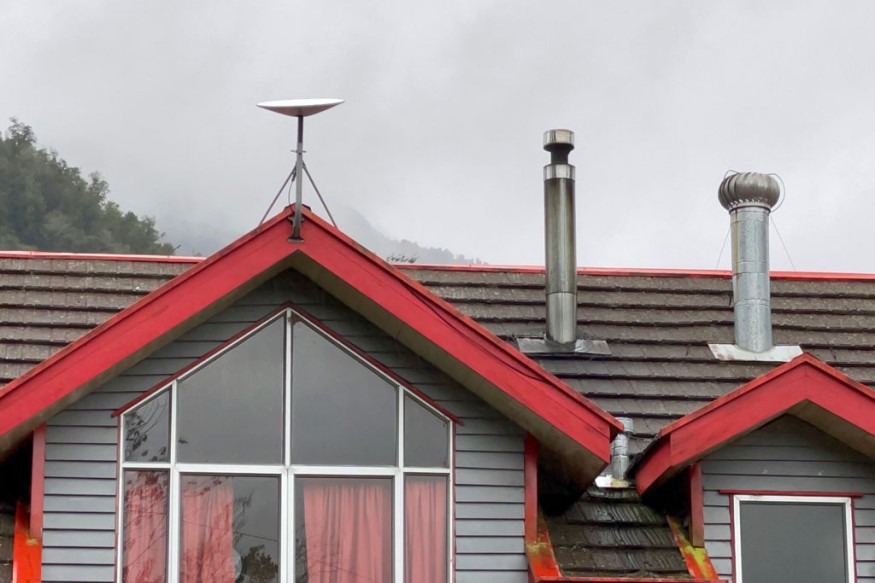SpaceX will launch a Falcon 9 rocket carrying 50 Starlink satellites from the Vandenberg Space Force Base on Friday after Elon Musk's firm responded to NASA's worries about its ambitions to put 30,000 Starlink satellites into space.
According to SpaceX, the Starlink internet satellites will add an existing fleet of Starlink satellites positioned in low Earth orbit to strengthen the company's network and broadband signal interface for internet consumers throughout the world.

SpaceX Addresses NASA Concerns Over Starlink Satellites
SpaceX attempted to answer NASA's fears that the company's satellites may raise the chance of accidents in orbit.
"The reliability of the satellite network is currently higher than 99% following the deployment of over 2,000 satellites, where only 1% have failed after orbit raising," SpaceX said on its website.
SpaceX wants to build a megaconstellation of over 42,000 Starlink satellites and launched 46 more on Monday in its quest to bring low-cost internet to rural places.
SpaceX stated that it can now produce up to 45 satellites weekly and has launched up to 240 satellites in a single month.
NASA voiced alarm earlier this month about SpaceX CEO Elon Musk's plans to orbit 30,000 additional Starlink satellites. A letter to the Federal Communications Commission (FCC) pointed out the idea that might cause "significant congestion," raise the risk of crashes and interfere with NASA's missions.
The letter was written to the FCC, which is currently considering SpaceX's application for a license to launch a new generation of satellites known as Starlink Gen2. In 2018, SpaceX was granted the first FCC license for 12,000 satellites.
According to NASA's letter, there are already 6,100 monitored objects in low orbit, a figure that Musk's proposals would rise fivefold. Though it did not declare it would reject an FCC license for Starlink Gen2, the agency asked for further information on the project and its implications on "the long-term sustainability of the space environment."
SpaceX responded by saying it had taken extra precautions to avoid collisions in orbit, including establishing an "advanced collision avoidance system" that initiates avoidance maneuvers if a "higher than 1/100,000 likelihood of collision" exists.
ALSO READ : Solar Flares A Major Threat Elon Musk's Starlink -The Revolutionary Internet Satellites in Space
SpaceX also stated that the satellites are inserted at low altitudes to evaluate their health before being sent into operational orbit, and that they are operated at low altitudes to avoid debris.
The corporation claims that it adheres to stricter requirements than those set by the FCC, de-orbiting its satellites in five to six years rather than the FCC's planned 25 years.
What to Expect During Falcon 9 Rocket Launch From Vandenberg Space Force
Despite these concerns, SpaceX plans to launch its Falcon 9 rocket from Vandenberg Space Force Base this week.
Unlike most Starlink flights, which take off from Florida's Kennedy Space Center, this one will take off around 130 miles northwest of Los Angeles.
The mission will send 50 Starlink internet satellites into low-Earth orbit, and it will be SpaceX's eighth and Starlink's fourth missions this year.
It's also the company's second mission after a geomagnetic storm interrupted the deployment of roughly 40 Starlink satellites earlier this month.
Digital Trends said SpaceX's two-stage Falcon 9 rocket will soar far above the Pacific Coast as it roars into orbit. Various views of the rocket's quick ascent will be available from cameras on the ground and aboard the rocket itself.
SpaceX should have coverage of the first-stage rocket returning to land within minutes. The second stage will give amazing vistas of Earth as it soars well above it. SpaceX may possibly provide a video of the deployment of the Starlink satellites.
The launch is scheduled for Friday, February 25 at 12:12 p.m. ET. The rocket may launch on time, barring any last-minute technical glitches or bad weather in the vicinity. SpaceX will update its Twitter feed with the most up-to-date information.
To watch Friday's launch, you may check the video player below or SpaceX's YouTube site to see the same player.
RELATED ARTICLE : Experts Reveal That 3% Of SpaceX's Starlink Satellites Have Failed In Orbit So Far
Check out more news and information on Starlink in Science Times.










